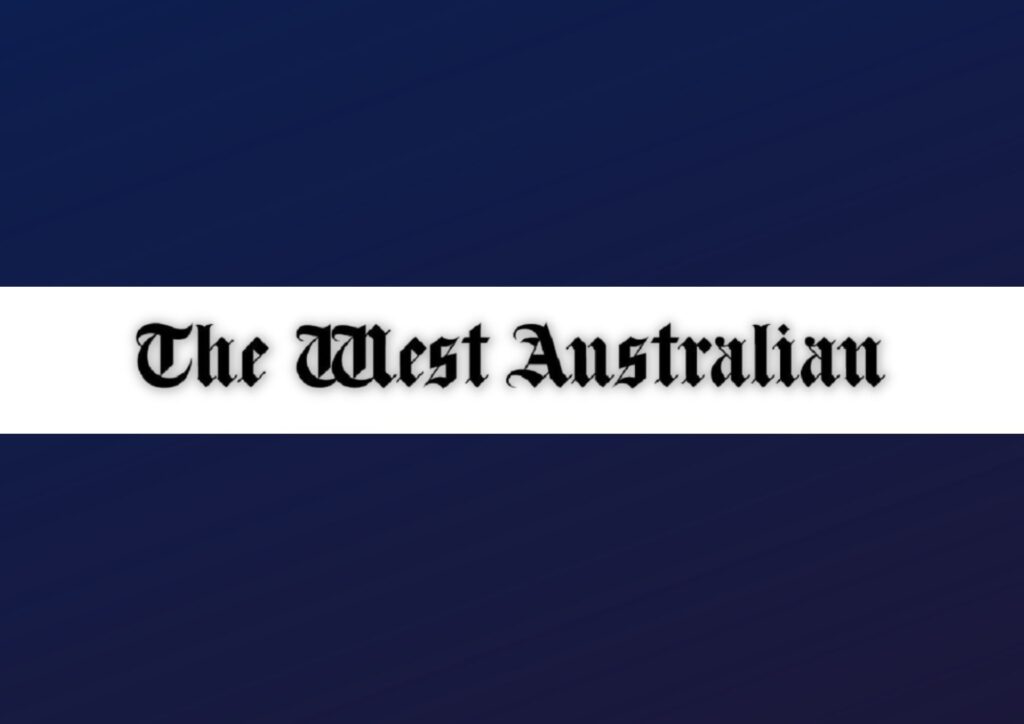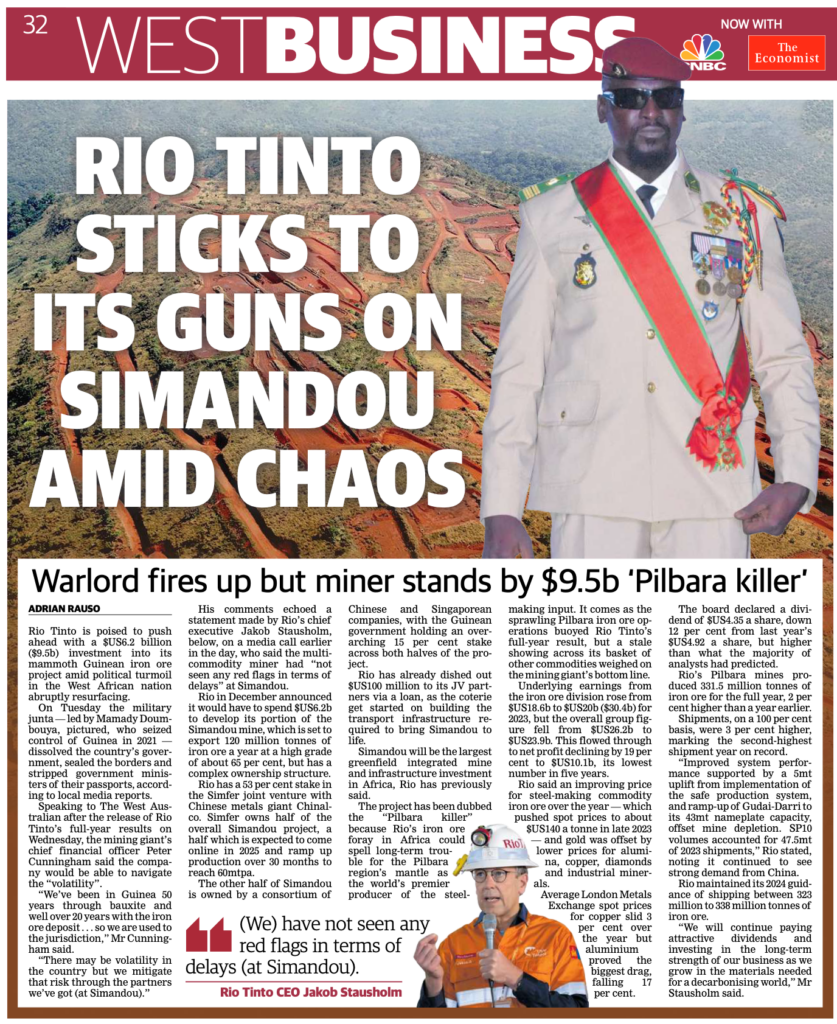

Warlord fires up but miner stands by $9.5b ‘Pilbara killer’
Article by Adrian Rauso courtesy of the West Australian..
Rio Tinto is poised to push ahead with a $US6.2 billion ($9.5b) investment into its mammoth Guinean iron ore project amid political turmoil in the West African nation abruptly resurfacing.
On Tuesday the military junta — led by Mamady Doumbouya, pictured, who seized control of Guinea in 2021 — dissolved the country’s government, sealed the borders and stripped government ministers of their passports, according to local media reports.
Speaking to The West Australian after the release of Rio Tinto’s full-year results on Wednesday, the mining giant’s chief financial officer Peter Cunningham said the company would be able to navigate the “volatility”.
“We’ve been in Guinea 50 years through bauxite and well over 20 years with the iron ore deposit . . . so we are used to the jurisdiction,” Mr Cunningham said.
“There may be volatility in the country but we mitigate that risk through the partners we’ve got (at Simandou).”
His comments echoed a statement made by Rio’s chief executive Jakob Stausholm, below, on a media call earlier in the day, who said the multi-commodity miner had “not seen any red flags in terms of delays” at Simandou.
Rio in December announced it would have to spend $US6.2b to develop its portion of the Simandou mine, which is set to export 120 million tonnes of iron ore a year at a high grade of about 65 per cent, but has a complex ownership structure.
Rio has a 53 per cent stake in the Simfer joint venture with Chinese metals giant Chinalco. Simfer owns half of the overall Simandou project, a half which is expected to come online in 2025 and ramp up production over 30 months to reach 60mtpa.
The other half of Simandou is owned by a consortium of Chinese and Singaporean companies, with the Guinean government holding an overarching 15 per cent stake across both halves of the project.
Rio has already dished out $US100 million to its JV partners via a loan, as the coterie get started on building the transport infrastructure required to bring Simandou to life.
Simandou will be the largest greenfield integrated mine and infrastructure investment in Africa, Rio has previously said.
The project has been dubbed the “Pilbara killer” because Rio’s iron ore foray in Africa could spell long-term trouble for the Pilbara region’s mantle as the world’s premier producer of the steel-making input. It comes as the sprawling Pilbara iron ore operations buoyed Rio Tinto’s full-year result, but a stale showing across its basket of other commodities weighed on the mining giant’s bottom line.
Underlying earnings from the iron ore division rose from $US18.6b to $US20b ($30.4b) for 2023, but the overall group figure fell from $US26.2b to $US23.9b. This flowed through to net profit declining by 19 per cent to $US10.1b, its lowest number in five years.
Rio said an improving price for steel-making commodity iron ore over the year — which pushed spot prices to about $US140 a tonne in late 2023 — and gold was offset by lower prices for alumina, copper, diamonds and industrial minerals.
Average London Metals Exchange spot prices for copper slid 3 per cent over the year but aluminium proved the biggest drag, falling 17 per cent.
The board declared a dividend of $US4.35 a share, down 12 per cent from last year’s $US4.92 a share, but higher than what the majority of analysts had predicted.
Rio’s Pilbara mines produced 331.5 million tonnes of iron ore for the full year, 2 per cent higher than a year earlier.
Shipments, on a 100 per cent basis, were 3 per cent higher, marking the second-highest shipment year on record.
“Improved system performance supported by a 5mt uplift from implementation of the safe production system, and ramp-up of Gudai-Darri to its 43mt nameplate capacity, offset mine depletion. SP10 volumes accounted for 47.5mt of 2023 shipments,” Rio stated, noting it continued to see strong demand from China.
Rio maintained its 2024 guidance of shipping between 323 million to 338 million tonnes of iron ore.
“We will continue paying attractive dividends and investing in the long-term strength of our business as we grow in the materials needed for a decarbonising world,” Mr Stausholm said.
(We) have not seen any red flags in terms of delays (at Simandou).
Rio Tinto CEO Jakob Stausholm.